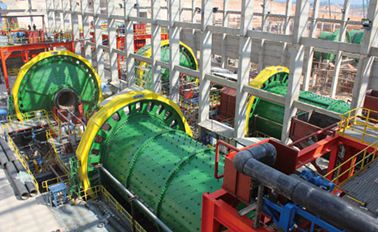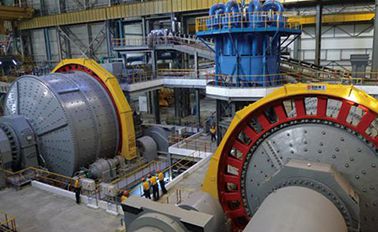1 Product Composition
The XY-INS-F-06 optical fiber combined navigation system consists of three parts: the fiber optic inertial measurement unit (IMU), the secondary power board, and the navigation computer.
2 Functional Requirements
- Capable of measuring the carrier’s motion angular rate and linear acceleration information.
- Capable of performing self-inspection of the equipment and outputting self-inspection information.
- Capable of performing ground self-alignment and air transfer alignment.
- Capable of performing “pure inertial” navigation and “inertial + satellite” combined navigation.
- Capable of receiving primary inertial information and sending navigation information through the communication port.
- Supports online software upgrades.
3 Performance Requirements
1.1 Gyroscope Performance Requirements
- Gyroscope zero bias stability: ≤0.1°/h (1σ, full temperature range);
- Gyroscope zero bias repeatability: ≤0.1°/h (1σ, full temperature range);
- Angular rate range: -500°/s to +500°/s;
- Angle random walk: ≤0.01°/h<sup>1/2</sup> (1σ, full temperature range);
- Scale factor nonlinearity: ≤100ppm;
- Scale factor repeatability: ≤100ppm;
- Measurement bandwidth: 300Hz (phase lag ≤45°, amplitude attenuation ≤-3dB);
- Startup time: ≤10s;
1.2 Accelerometer Performance Requirements
- Accelerometer zero bias stability: ≤50ug (1σ, full temperature range);
- Accelerometer zero bias repeatability: ≤50ug (1σ, full temperature range);
- Measurement range: -25g to 25g;
- Measurement bandwidth: 500Hz (phase lag ≤45°, amplitude attenuation ≤-3dB);
1.3 Self-Inspection Time
Self-inspection time: ≤10s;
1.4 Alignment Method and Time
Alignment method: Transfer alignment (using primary inertial or satellite navigation information) / ground self-alignment;
Alignment time: Transfer alignment ≤3min; Ground self-alignment: ≤5min.
1.5 Alignment Accuracy
Transfer alignment:
- Heading angle: ≤0.05° (1σ);
- Pitch angle: ≤0.02° (1σ);
- Roll angle: ≤0.02° (1σ); Ground self-alignment:
- Heading angle: ≤0.3° (1σ);
- Pitch angle: ≤0.05° (1σ);
- Roll angle: ≤0.05° (1σ);
1.6 Navigation Information Update Rate
Navigation information update rate: 200Hz (configurable);
1.7 Measurement Range
- Pitch angle: -89.5° to +89.5°;
- Roll angle: -180° to +180°;
- Heading angle: 0° to 360°;
1.8 Dynamic Combined Navigation Accuracy (During transfer alignment with maneuvering)
- Pitch angle: ≤0.02° (1σ);
- Roll angle: ≤0.02° (1σ);
- Heading angle: ≤0.05° (1σ);
- Horizontal position accuracy: ≤5m (1σ);
- Height accuracy: ≤10m (1σ);
- Horizontal speed accuracy: ≤0.1m/s (1σ);
- Vertical speed accuracy: ≤0.1m/s (1σ);
1.9 Combined Navigation to Pure Inertial Navigation Accuracy
- Pitch angle: ≤0.1° (within 20min);
- Roll angle: ≤0.1° (within 20min);
- Heading angle: ≤0.1° (within 20min);
- Horizontal positioning hold accuracy: ≤2 nautical miles/20min (CEP50);
4 Equipment and Environmental Requirements
1.10 Physical and Environmental Requirements
1.10.1 Temperature
- Operating temperature: -40°C to +60°C.
- Storage temperature: -50°C to +70°C.
1.10.2 Operating Voltage
- DC18V to 36V, ripple ≤200mV.
1.10.3 Power Consumption
- Maximum instantaneous power consumption at startup: <40W;
- Stable power consumption: <20W;
- Startup current: <1.5A;
- Steady-state current: <0.6A;
1.10.4 Mechanical Dimensions

Figure 4-1 Inertial Navigation Device Dimensions
1.10.5 Electrical Interface
The product’s external connector model is J30J-25ZKP-Q, with the following pin definitions:
1.10.6 Weight
Inertial navigation system weight ≤2kg;
1.11 Environmental Adaptability
1.11.1 Shock
The fiber optic inertial component should function normally after withstanding the shock tests specified in the table below.
| Pulse Waveform | Acceleration Peak | Duration | Velocity Change | Time Between Successive Shocks ms | Shock Direction | Number of Shocks |
| Rear peak sawtooth wave | 20 g | 11 ms | 1.10 m/s | ≥55 ms | Three axes, six directions | 3 times per direction |
1.11.2 Random Vibration
The fiber optic inertial component should function normally under the functional vibration specified in the figure below.

Figure 3-3 Functional Vibration Spectrum






